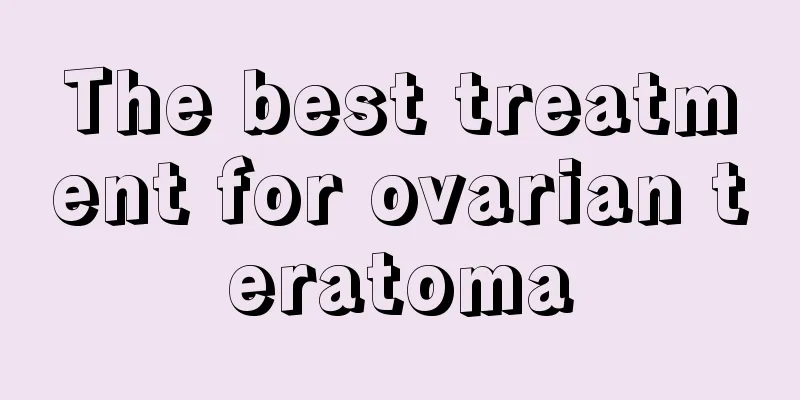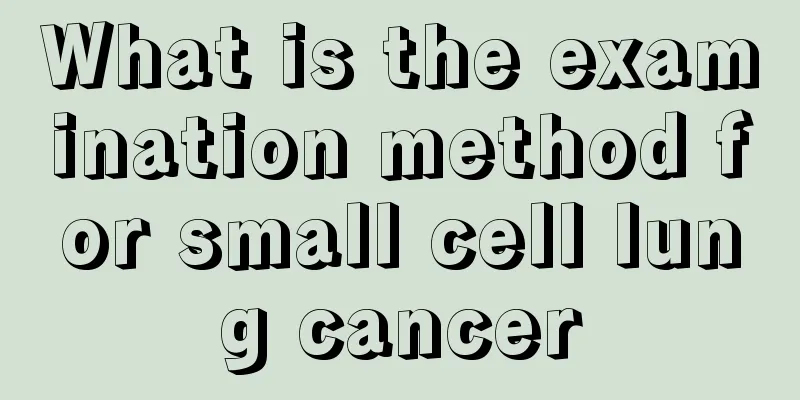The best treatment for ovarian teratoma

|
What is the best treatment for ovarian teratoma? Patients with ovarian teratoma should choose surgical treatment. The scope of surgery can be selected as the ipsilateral annex resection, ipsilateral teratoma removal and (or) contralateral ovarian biopsy. The surgical method can be laparoscopic or laparotomy. The benign or malignant nature of the teratoma can be preliminarily determined based on the intraoperative findings. If it is suspected to be a malignant tumor, it should be sent for frozen pathology examination as soon as possible. Malignant teratomas should also undergo complete staged surgery as much as possible. During the operation, the pelvis is fully explored, the greater omentum and peritoneum are removed, and lymph node biopsies are performed to understand the scope of tumor infiltration and the extent of involvement of various organs and tissues. For young patients with malignant teratomas who want to have children, surgery to preserve fertility can be considered. The chemotherapy regimen currently recommended by WHO is the BEP regimen. 1. Western medicine treatment of ovarian teratoma. Once a teratoma is found, doctors recommend removal. The presence of ovarian teratoma may affect women's fertility; whether the teratoma is benign can only be determined by pathological examination after removal, and teratoma has a certain rate of malignant transformation. Failure to remove it is like carrying a time bomb that may explode at any time. B-ultrasound suggests that the symptoms may be teratoma, but other situations are not ruled out. A pathological examination must be performed after surgery to make a final conclusion. Therefore, even if there are no symptoms, it does not affect daily life, and most teratomas are benign, surgery should be performed. 2. TCM treatment of ovarian teratoma Teratoma is a common benign tumor of the female reproductive organ, which is called "stone mass" or "intestinal tan" in TCM. Ovarian teratoma is clinically divided into three types: (1) Qi stagnation and blood stasis type: manifested by a lump on one or both sides of the lower abdomen. Small lumps usually have no obvious symptoms, while large lumps may cause palpitations, shortness of breath, back pain, lower abdominal pain, constipation, frequent urination, and ecchymosis on the tongue. (2) Cold-dampness and stasis type: There are lumps in the abdomen, edema in the lower limbs, water accumulation in the abdomen and chest, and poor digestion. (3) Qi stagnation and heat type: severe pain in the abdomen, abdominal distension and nausea, fever and chills, mental depression, weakness and fatigue, increased vaginal discharge, thick and foul. The common characteristics of all types are that ovarian cysts are mostly unilateral, with intact capsules, mobility, smooth surface, no ascites, cystic, smooth cyst wall, uniform shape, slow progression, and a long course. Ovarian teratomas are mostly caused by women's neglect of conditioning during menstruation or after childbirth, invasion of the six evils, or injury due to the seven emotions, dysfunction of the internal organs, resulting in dampness, turbidity, phlegm, blood stasis blocking the blood vessels, and accumulation over time, forming cysts. Ovarian teratoma is usually treated with surgical resection, but most patients are unwilling to accept it, and it is expensive and leaves wounds. Even after the patient's resection, a cyst grows on the opposite side or recurs at the original site. Traditional Chinese medicine can achieve twice the result with half the effort in treating ovarian teratoma. Based on the theory of traditional Chinese medicine, treatment is based on syndrome differentiation. Flexible application of the treatment principles of promoting blood circulation and removing stasis, softening and dispersing nodules, removing dampness and eliminating diseases, and eliminating accumulation and promoting qi has achieved ideal results. Warm reminder: Ovarian teratoma can occur at any age, but it is most common between the ages of 20 and 50. Malignant tumors rarely have symptoms in the early stages of the disease, so early diagnosis is difficult. First of all, ovarian tumors are different from cysts. When the cysts are small, they can be dispelled with drugs, but for tumors, surgery is the only treatment method. |
<<: Is teratoma harmful to patients?
>>: What are the symptoms of ovarian teratoma
Recommend
Do you know the effects and contraindications of wax apple?
Wax apple is a fruit mainly distributed in Taiwan...
How long does it take for liver cancer to reach the late stage? Reveal the symptoms of liver cancer in the late stage
The question of how long it will take for liver c...
The harm of preservatives to humans
Preservatives are widely used in food. Most foods...
What clothes are suitable to wear in October
Whenever it is the golden October, everyone will ...
Can I use vinegar when washing my hair?
Nowadays, every household has vinegar. Vinegar ha...
What causes pain in the kidney area? Is it related to kidney disease?
At present, more and more patients are diagnosed ...
How long can you live after stage II breast cancer surgery?
The survival time after stage II breast cancer su...
What are the benefits of pigeon stewed with mung beans
Many people in our lives have the habit of eating...
Understanding of the pathogenesis of brain cancer by traditional Chinese and western medicine
The etiology and pathogenesis of brain cancer are...
The flesh next to the toes hurts when pressed
Some netizens asked why it hurts when pressing th...
Can winter melon be frozen
Winter melons are usually huge in size due to the...
Can Chinese toon be eaten in the refrigerator?
Toona sinensis is a food ingredient with a unique...
What are the effects of ephedrine hydrochloride, and what are the benefits of ephedrine hydrochloride to the central nervous system
Ephedrine hydrochloride is a traditional Chinese ...
How to do bronchogram?
Bronchography is a method of examination. Broncho...
Can late-stage cervical cancer be cured?
Can patients with advanced cervical cancer be cur...









